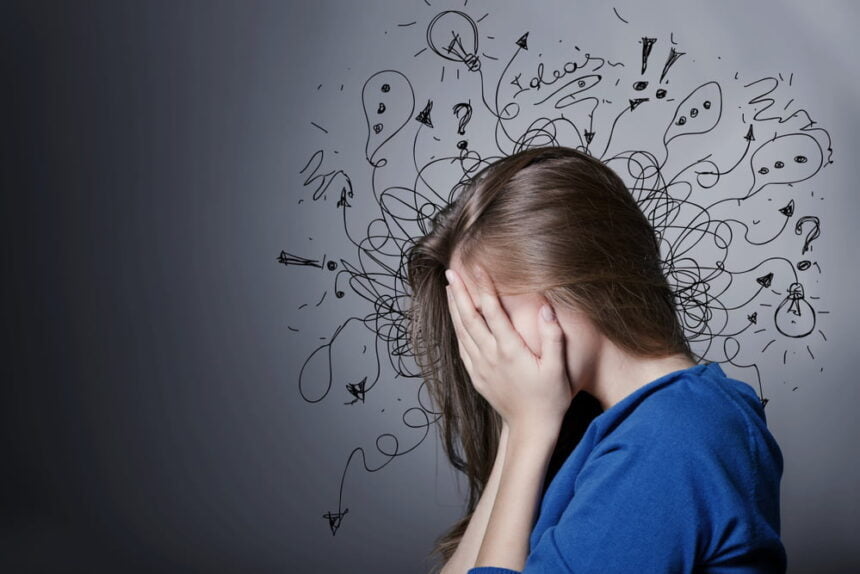Anxiety is a common feeling, as it occurs in most people’s lives. Its inherent function is to warn us of impending dangers, enabling us to assess and respond appropriately. Additionally, this enhanced state of readiness can aid in performance and promote creative impulses.
However, for many, anxiety generates exaggerated or inappropriate responses to a perceived threat, resulting in persistent and intrusive symptoms associated with disorders. These frequently have a detrimental influence on their life.
Although anxiety is one of the most widespread mental health conditions, this article will examine the relationship between the public’s view of the disorder, how diagnosed individuals deal with it, and its consequences.
What is an Anxiety Disorder?
Anxiety is a natural response to stress that can be beneficial in certain circumstances. For example, it can warn us of impending risks and assist us in preparing and paying attention.
But anxiety disorders are distinct from normal nervous or worried feelings since they involve excessive dread or anxiety. Anxiety disorders are the most prevalent type of mental illness, affecting about 30% of adults at some point during their life.
What Are Most Common Types of Anxiety Disorders
Anxiety is frequently experienced as a series of related symptoms and disorders, marked by perplexing circularity between the causes of anxiety and the reactions elicited. The following are some of the most frequently seen symptoms and forms of anxiety.
Panic Attacks
Panic attacks are episodes of sudden and intense fear that can cause severe physical reactions despite the lack of danger or apparent reason. This disorder has been characterized as a form of emotional short-circuiting. The limbic brain takes over the body’s functioning, resulting in overwhelming sensations, such as a racing heart, sweating, fainting, nausea, shaky limbs, chest pains, and a sense of losing control.
Adrenaline suppresses the cognitive abilities that ordinarily assist the brain in determining the true nature of a threat to the body. The symptoms of panic attacks can be so severe that individuals who experience them feel like they’re dying.
Phobia
A phobia is an extreme and irrational fear of a particular thing or scenario, to the point where the individual experiencing it will go to considerable measures to avoid it.
For example, fear of being evaluated or humiliated is a form of social phobia. It might manifest as a dread of performing certain tasks in public, such as public speaking.
Obsessive-Compulsive Disorder (OCD)
OCD affects a large portion of the population. It’s defined as intrusive, unwelcome, or repeating thoughts. These persistent ideas, feelings, behaviors, or sensations (obsessions) cause the sufferer to feel compelled to act (compulsions) to relieve themselves of the obsessive thoughts.
This provides only brief respite, and ceasing to repeat the obsessive rituals might result in severe anxiety. OCD can range from mild to severe, but if it’s challenging and untreated, it can impair a person’s ability to function at a job, school, or even live a comfortable home life.
Post-Traumatic Stress Disorder (PTSD)
PTSD is a syndrome or psychological reaction to a very stressful incident outside the normal range of experiences, such as physical violence, military warfare, or a natural disaster. Anxiety, depression, frequent nightmares, flashbacks, and avoidance of situations that may provoke memories of the event are common symptoms of this disorder.
Treatment
Psychotherapy and medication are the two primary therapeutic options for anxiety disorders. You may reap the most significant benefits from a combination of the two. However, it may take some time and trial and error to determine which therapies are most effective for you.
Psychotherapy
Also referred to as psychological counseling or talk therapy, this type of therapy works with a therapist to alleviate anxiety symptoms and can be a helpful way to manage the disorder.
The most effective type of psychotherapy for anxiety is cognitive-behavioral therapy. CBT is typically a brief treatment that teaches you particular skills to help manage your symptoms and progressively reintroduce yourself to activities you’ve avoided.
CBT involves exposure treatment, which involves gradually exposing yourself to the object or circumstance that causes your anxiety. Doing this helps you develop confidence in handling this situation and associated anxiety symptoms.
Medications
Numerous medications are used to alleviate symptoms, depending on the kind of anxiety disorder and the presence of additional mental or physical health problems. Certain antidepressants, such as Zoloft and Wellbutrin, are also used to treat anxiety problems.
The difference between zoloft and wellbutrin is that Wellbutrin works by boosting free dopamine levels (dopamine governs mood and muscle action and is required for the brain’s pleasure and reward systems to function properly) and norepinephrine (Norepinephrine assists the brain in mobilizing for action and may boost energy and alertness) in the neural synapse.
On the other hand, Zoloft works by raising the amount of serotonin available for use, an essential hormone that stabilizes our mood, feelings of well-being, and happiness.
Final Thoughts
If you have an anxiety disorder or exhibit particular symptoms, seek help from your doctor to determine your treatment options and overcome them. Since there are numerous anxiety disorders, multiple treatments are undoubtedly available. Hence, observe yourself and become aware of your triggers.

